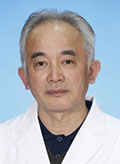Why don't upper teeth develop dry socket?
Generally, dry socket is less likely to occur in upper teeth. This may be due to several factors, including richer blood supply to the upper alveolar bone, more efficient gravitational drainage in the oral cavity, smaller trauma during upper tooth extraction, lower infection probability in the upper dental region, and fewer postoperative foreign body residues. It is recommended to seek timely medical attention, clarify the condition of the teeth, and follow a doctor's guidance for proper postoperative care. Specific explanations are as follows:

1. Richer blood supply to the upper alveolar bone: The area around the upper alveolar bone has dense vascular distribution. After tooth extraction, sufficient nutrients and oxygen are available for wound healing, which facilitates rapid formation of a blood clot and reduces the risk of dry socket. Avoid touching the extraction site with the tongue, and refrain from brushing or rinsing within 24 hours after extraction to protect the blood clot.
2. More efficient gravitational drainage in the oral cavity: Since the upper teeth are located in the upper part of the mouth, exudates and food debris after extraction can be naturally drained by gravity, making it less likely for such materials to accumulate at the wound site and cause infection. Gently rinsing the mouth after meals can help remove residual food particles.
3. Smaller trauma during upper tooth extraction: Most upper teeth have relatively simple anatomy, with fewer roots and minimal root bifurcation, resulting in less damage to surrounding tissues during extraction and faster wound healing. For mild postoperative pain, medications such as ibuprofen sustained-release capsules, acetaminophen tablets, or metronidazole tablets may be used as directed by a physician.
4. Lower infection probability in the upper dental region: The upper tooth area is farther from the throat and submandibular salivary glands, reducing its exposure to bacterial contamination compared to the lower dental region, thereby lowering the risk of infection-induced dry socket. In cases of mild infection, antibiotics such as amoxicillin capsules, cefuroxime axetil tablets, or ornidazole capsules may be used to control the infection.
5. Fewer postoperative foreign body residues in upper teeth: The extraction sites of upper teeth are located higher in the mouth, making it harder for food debris and bacteria to remain trapped, thus reducing the risk of wound infection. If foreign material does remain, the dentist may perform an alveolar socket debridement procedure to remove the residue and promote healing.
In daily life, maintaining good oral hygiene is essential. After tooth extraction, avoid eating hard or hot foods, and abstain from smoking and alcohol consumption to minimize irritation to the wound. Regular dental check-ups are also important for early detection and treatment of oral issues, helping to maintain overall dental health.





